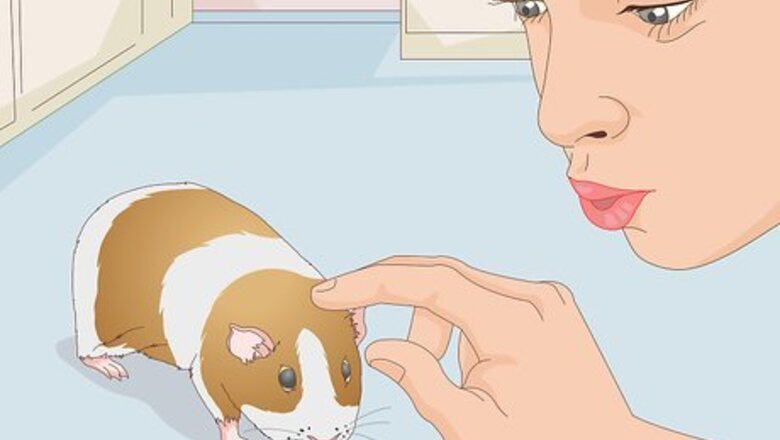
views
Washing Your Guinea Pig
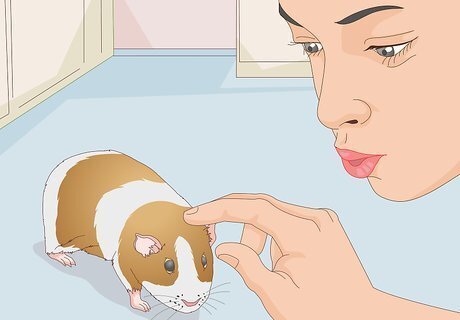
Calm your guinea before bathing it. Your guinea pig will probably become anxious or afraid if you simply place it in a container of water. To relax your guinea pig, hold it close to you, talk to it in a soothing voice, and stroke its fur gently. You can also give your guinea pig a treat such as a lettuce leaf or cucumber slice to distract it. If you need to bathe more than one guinea pig, wash them one at a time so they don't hurt or aggravate each other. You'll also be able to pay more attention to a single guinea pig than two at a time. If your guinea pig is acting jumpy, set it in a small box and carry the box to the bathing area.
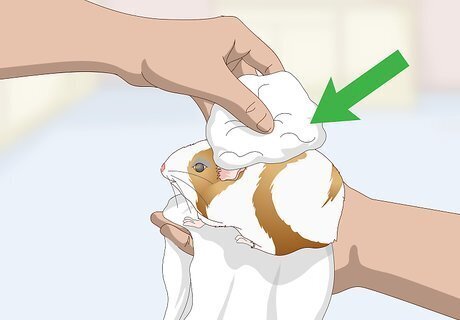
Wipe your guinea pig's soiled fur with a damp cloth. Before you give your guinea pig a full bath, try removing surface dirt with a damp cloth. Dip a clean cloth in warm water and wring it out. Then wipe the cloth over the soiled patch of fur. If the fur looks clean, you won't need to wash the guinea pig in water. Avoid using dust treatments that are advertised to keep guinea pigs clean. Since guinea pigs don't use dust to clean themselves, it can actually cause respiratory problems if the guinea pigs breathe it in.

Pour 2 inches (5.1 cm) of water into the container. To prevent your guinea pig from slipping in the container, lay a small cloth in the bottom of the bathing container. Then pour enough warm water to come 2 inches (5.1 cm) up the sides of the container. Avoid using hot water, which can dry or irritate the guinea pig's sensitive skin. Guinea pigs also dislike cold water since it will lower their body temperature. Your guinea pig should be able to stand up comfortably in the water.
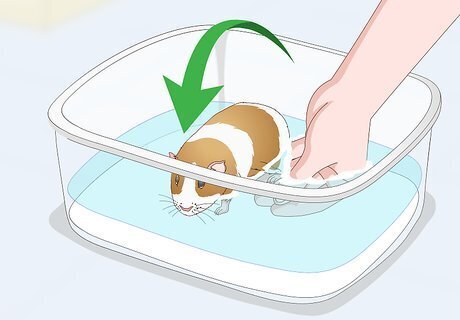
Lower your guinea pig into the water. Slowly put your guinea pig into the water hindquarters-first. Once your guinea pig is in the water, give it time to adjust to the temperature and feeling of the water. Don't walk away while your guinea pig is in the container. Stay close so you can reassure your guinea pig. If your guinea pig seems distressed in the water, offer it a treat so it develops a positive association with bath time.
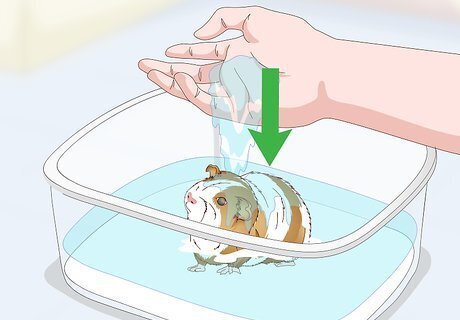
Rinse your guinea pig with warm water. Use a small cup or your hands to scoop warm water and pour it over the guinea pig's body until its fur is wet. Try not to pour water on its face or in its ears. To prevent water from running into the guinea pig's face, cup your hand behind their face. This should divert water from getting into their eyes and mouth. Try placing a rolled towel underneath the container so it’s at a 15- to 30-degree angle to help move water away from the guinea pig’s face. If your guinea pig's face is extremely dirty, use a damp washcloth to wipe off the dirt but avoid the eyes, nose, ears, and mouth.
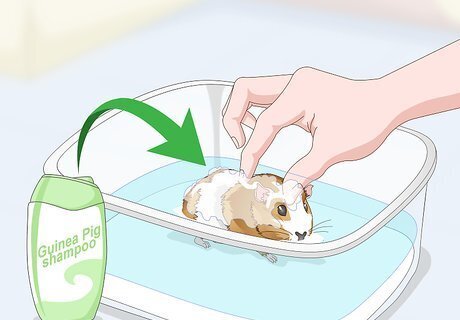
Rub a few drops of shampoo into the guinea pig's fur. Choose a guinea-pig safe shampoo and squirt a few drops of it into your hands. Gently massage the shampoo into the guinea pig's fur. Be as gentle as you can since their skin is sensitive and you're trying to keep them calm. Avoid getting shampoo near the face and ears. Don't use human or dog shampoos on guinea pigs since these could irritate guinea pig skin. If you only need to spot clean your guinea pig, put a few drops of liquid dish soap into a small container with lukewarm water. Rub the soapy water onto the guinea pig’s fur with cotton balls.
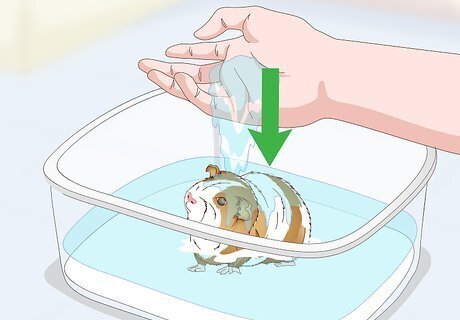
Rinse your guinea pig with warm water. Use your hands and pour enough warm water over the guinea pig's fur to completely rinse away the shampoo suds. It's important to remove all traces of shampoo so the residue doesn't irritate the guinea pig's skin.
Drying Your Guinea Pig
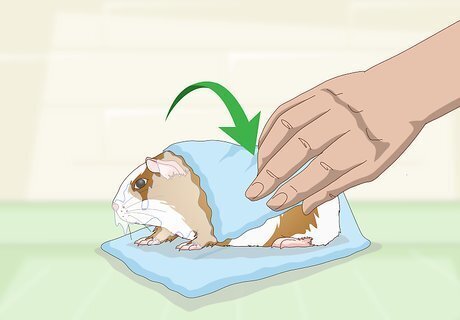
Place your guinea pig on a clean towel. Gently wrap it up so that the towel absorbs most of the moisture and keeps your guinea pig warm. Do not be alarmed if your guinea pig starts shivering. This is natural and they should stop after they're completely dry. If the towel becomes too damp, use a new dry towel so it absorbs more moisture.
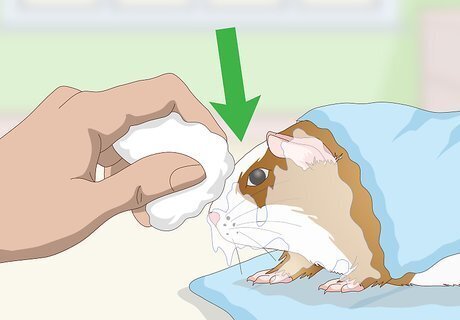
Towel-dry the guinea pig's fur. Use the soft towel to blot moisture from the guinea pig's body. Continue to gently press the towel into the fur until the fur is completely dry. Only wipe around the guinea pig's eyes, ears, or nose if they're gunky or still dirty. Be gentle when you're toweling, especially near the guinea pig's face. Avoid rubbing or scrubbing the fur. Warning: Avoid using a hair dryer on guinea pigs since they are sensitive to heat and noise.
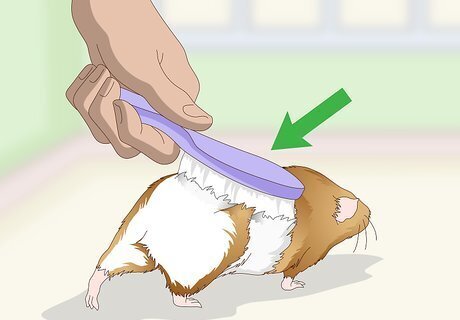
Brush your guinea pig's fur. This is especially important if you have a long-haired guinea pig. Use a soft-bristled or guinea pig brush to remove tangles and prevent matting. Take your time when you brush your guinea pig because it probably enjoys the soothing feeling and attention. Pay attention to any bumps or lumps on your guinea pig's skin as you brush. If you have any concerns, talk with the veterinarian.
Keeping Your Guinea Pig Clean
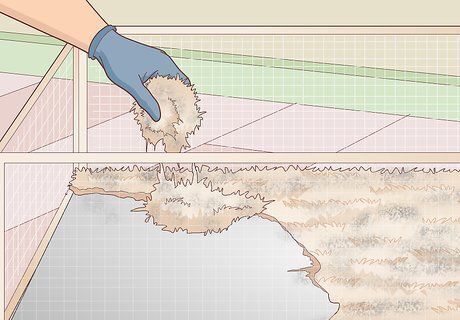
Change the bedding once a day. Remove all of the bedding from the cage and replace it every day. Line the cage with newspaper and spread hay over it. To make the cage even more comfortable for your guinea pig, top the hay with recycled paper pellets or old towels. Avoid spreading pine shavings since the shavings may contain oils that irritate the guinea pig's skin. You may also use cloth baby diapers or fleece as long as you change it daily use free and clear detergents when you clean them.

Clean and disinfect the cage once a week. To thoroughly clean the cage, remove all the bedding and make a solution of bleach and water. Spray the solution inside the cage and wipe it down. Then rinse the cage with water multiple times to remove the bleach residue and let it air-dry completely before putting fresh bedding in. You don’t have to disinfect the cage unless your animals are dealing with an illness, such as ringworm. Bleach may cause irritation to your guinea pig’s feet, eyes, and respiratory tracts. Try using Homemade Disinfectant Solution For a basic solution, combine 1 fluid ounce (30 mL) of bleach with 1 US quart (0.95 L) of water.

Spot clean as needed. Check the guinea pig's cage throughout the day and droppings or soiled patches if you see them. Do this frequently to keep your guinea pig clean and the cage smelling fresh. Rinse the food dishes and waterers throughout the day too. If you’re using fleece bedding, try spot-cleaning with a hand broom you only use in the cage.
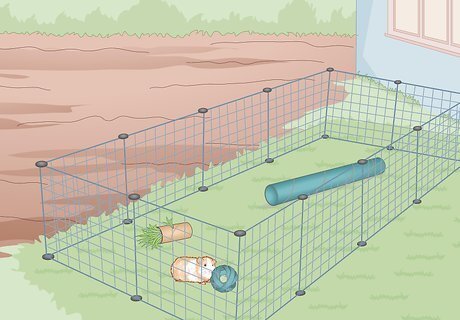
Keep the guinea pig's hutch or play area away from dirt. If your guinea pig's hutch is set on dirt, consider moving to either grass or pavement, especially during colder months. If you let your guinea pig run around outside in an enclosure, choose a grassy space that doesn't have exposed dirt.



















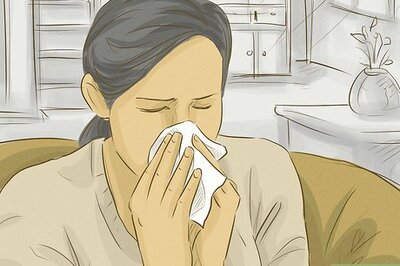
Comments
0 comment